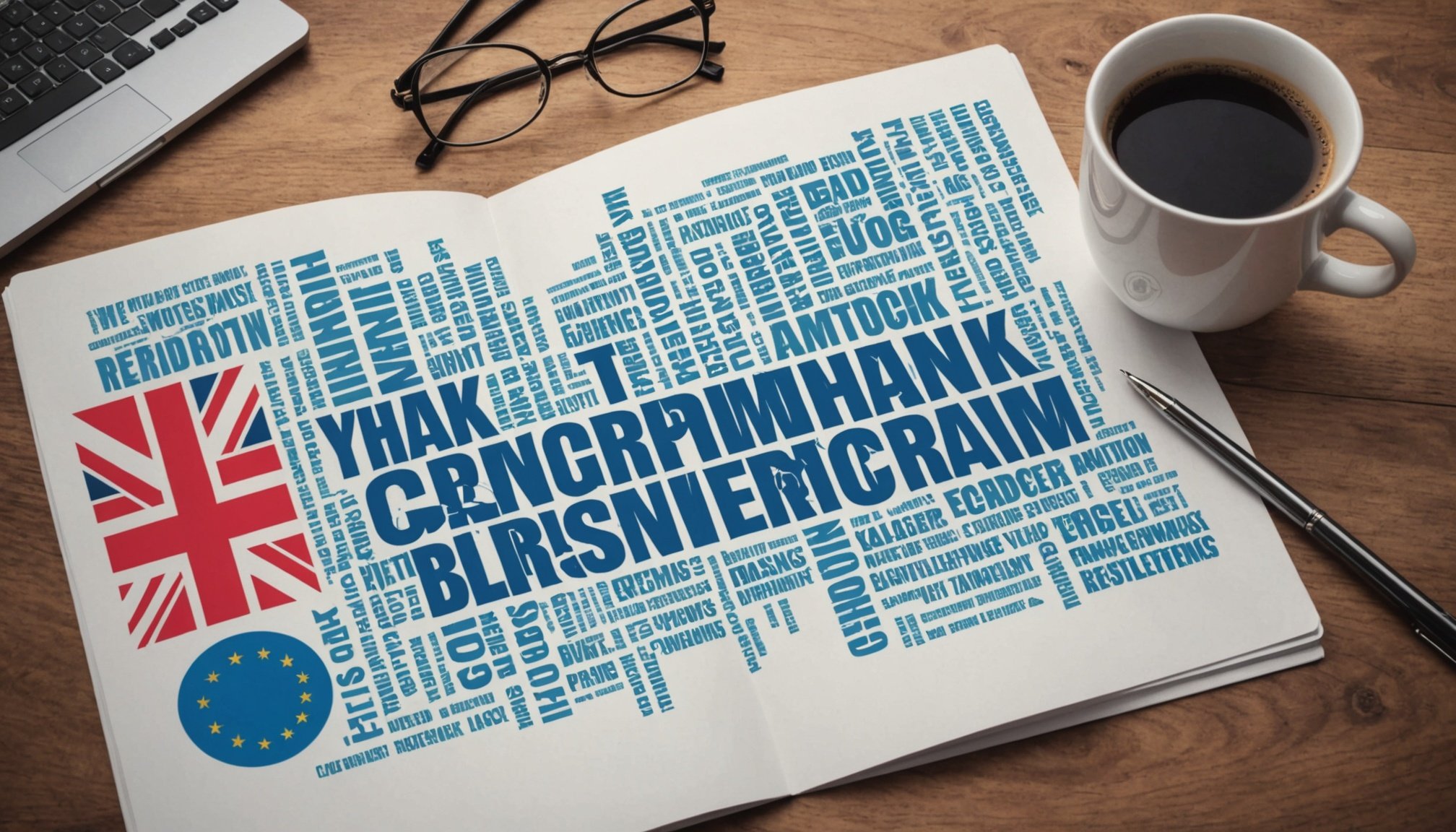Your Comprehensive Blueprint for UK Brands: Mastering Trademark Law to Protect Your Business Identity
Understanding Trademarks: The Foundation of Your Brand Identity
When you think about your business, one of the most valuable assets you have is your brand identity. This includes your logo, slogan, and even the colors you use. These elements are protected under trademark law, and understanding how to navigate this legal landscape is crucial for the success and growth of your business.
A trademark is essentially a sign or symbol that distinguishes your goods or services from those of your competitors. It can be a word, phrase, logo, or even a sound or color. For instance, the Nike swoosh or the Coca-Cola logo are iconic trademarks that immediately evoke the brand they represent[1][2][4].
Also read : The ultimate handbook for uk businesses: navigating legal compliance in online marketplaces
The Importance of Registering Your Trademark
While common law may offer some protection for your trademark if you have built up a sufficient trading reputation and goodwill, registering your trademark provides far more robust protection. Registration gives your business the exclusive right to use the mark, allowing you to sue anyone who infringes on it. This is particularly important in today’s competitive market, where brand identity can be a key differentiator.
To register a trademark in the UK, you need to apply to the Intellectual Property Office (IPO) by completing form TM3 online and paying the appropriate fee. Here are some key steps to ensure a successful application:
Also to read : Unlocking uk environmental regulations: key strategies for safely disposing of hazardous waste
- Conduct a thorough search: Check the UK Intellectual Property Office database and the EU trademarks register to ensure no one has registered or applied for a similar mark for the same goods or services[1][2].
- Describe your trademark accurately: Ensure your application correctly describes your trademark, as it cannot be altered after a period of two months post-registration[1].
- List all goods and services: Specify all the goods and services you want your trademark to cover. This is done using the classification system, which includes 45 different classes[2][5].
Navigating Trade Mark Classes
The classification system for trademarks is designed to help you specify exactly which goods or services your trademark will be used for. Here is a detailed look at how this works:
Trade Mark Classes Explained
- Choosing the Right Class: You must select the correct class and terms within that class to protect your trademark. For example, if you are a fashion brand, you would likely fall under Class 25, which includes clothing, footwear, and headgear[5].
- Multiple Classes: If your business operates across various sectors, you can pay an additional fee to cover more classes. This ensures maximum protection for your brand[2].
- Future-Proofing: It’s essential to think about how your products and services might evolve. Ensure the trademark you register can adapt to these changes while still reflecting your brand identity[2].
Potential Oppositions to Applications
After you submit your application, it will be examined by the IPO. Here’s what you need to know about potential oppositions:
- Examination Report: You will receive feedback within four weeks. If there are any issues, you have two months to resolve them[2].
- Publication and Opposition: If no objections arise, your trademark will be published in the trade marks journal for two months, during which anyone can oppose it. The owner of a similar existing trademark will be notified and given the opportunity to oppose your application[1][2].
Defending Your Trademark
Defending your trademark is crucial to maintaining your brand’s integrity and preventing competitors from using similar marks.
If Your Trademark Isn’t Registered
If your trademark is not registered, you can still take legal action against someone who is passing off their goods or services as yours. However, you must prove that:
- The public associates your trademark with your product or service.
- The other business’s goods or services have been mistaken for your own, damaging your business[1].
If Your Trademark Is Registered
Once registered, you have an automatic right to sue for infringement if anyone uses a similar mark to sell goods and services similar to those for which you registered it. There is no need to prove public association or confusion; the registration itself serves as evidence of your rights[1].
Registering a Trademark Outside the UK
If you plan to expand your business internationally, you need to consider registering your trademark in other countries.
Territorial Protection
Registered trademarks are territorial, meaning protection is limited to the country where you registered the mark. For example, registering a trademark in the UK only provides protection within the UK[1].
International Options
- Community Trade Mark: You can apply for a Community Trade Mark through the Office for Harmonisation in the International Market (OHIM), which provides protection throughout the EU[1].
- International Registration: You can also register your trademark internationally through the World Intellectual Property Organization (WIPO)[1].
Practical Insights and Actionable Advice
Here are some practical tips to help you navigate the process of registering and defending your trademark:
Conduct Thorough Research
Before applying, conduct a comprehensive search of existing trademarks to avoid potential conflicts. This includes searching the UK Intellectual Property Office database and the EU trademarks register[1][2].
Seek Professional Help
While you can register a trademark yourself, engaging a trade mark solicitor can make the process easier and more efficient. They can help you avoid common mistakes and ensure your application is successful[2].
Keep Your Trademark Up to Date
Remember that trademark registration lasts for ten years and must be renewed. Ensure you keep track of the renewal date to maintain your protection[2].
Financial and Growth Implications
Protecting your trademark is not just about legal compliance; it has significant financial and growth implications for your business.
Financial Protection
Registering your trademark helps prevent financial losses due to infringement. It also allows you to profit from your trademark by licensing or selling it, which can be a valuable asset for your company[1].
Long-Term Growth
A well-protected trademark is essential for long-term growth. It helps maintain customer trust and loyalty, which are critical for the success of any business. Here’s what a business owner might say:
“Protecting our trademark has been instrumental in our growth strategy. It ensures that our brand identity remains unique and recognizable, which is vital for building a loyal customer base.”
Brand Management Strategies
Effective brand management involves more than just registering a trademark. Here are some strategies to help you manage your brand effectively:
- Brand Guidelines: Develop clear brand guidelines that outline how your trademark should be used across all marketing materials and social media platforms.
- Consistency: Ensure consistency in the use of your trademark to maintain brand integrity.
- Customer Engagement: Engage with your customers to understand their perceptions of your brand and make adjustments accordingly.: Mastering Trademark Law for Your Business Success
Mastering trademark law is a critical aspect of protecting your business identity and ensuring long-term success. Here is a comprehensive summary of the key points:
Key Takeaways
- Research and Registration: Conduct thorough research and register your trademark to ensure exclusive rights.
- Classification: Use the classification system to specify the goods and services your trademark will cover.
- International Protection: Consider registering your trademark internationally if you plan to expand your business.
- Defending Your Mark: Be prepared to defend your trademark against infringement, whether it is registered or not.
- Financial and Growth Implications: Protecting your trademark has significant financial and growth implications for your business.
By following these guidelines and taking the necessary steps to protect your trademark, you can ensure the integrity and success of your brand.
Table: Comparing Trademark Registration Processes
| Aspect | UK Registration | EU Registration | International Registration |
|---|---|---|---|
| Authority | Intellectual Property Office (IPO) | Office for Harmonisation in the International Market (OHIM) | World Intellectual Property Organization (WIPO) |
| Territorial Coverage | UK only | EU only | Multiple countries |
| Application Process | Form TM3 online, fee payment | Application through OHIM | Application through WIPO |
| Protection Duration | 10 years, renewable | 10 years, renewable | 10 years, renewable |
| Opposition Period | 2 months, extendable to 3 months | 2 months, extendable to 3 months | Varies by country |
Detailed Bullet Point List: Steps to Register a Trademark in the UK
- Conduct a Thorough Search:
- Search the UK Intellectual Property Office database.
- Check the EU trademarks register.
- Ensure no similar marks exist for the same goods or services.
- Prepare Your Application:
- Complete form TM3 online.
- Pay the appropriate fee.
- Accurately describe your trademark.
- List all goods and services you want the trademark to cover.
- Submit Your Application:
- Submit your application to the IPO.
- Wait for the examination report within four weeks.
- Address Any Issues:
- Resolve any issues raised in the examination report within two months.
- Publication and Opposition:
- If no objections, your trademark will be published in the trade marks journal for two months.
- Anyone can oppose your application during this period.
- Registration:
- If no oppositions or if oppositions are resolved, your trademark will be registered.
- You will receive a certificate of registration.
By following this comprehensive guide, you can ensure that your business identity is well-protected, setting the stage for long-term growth and financial success.











